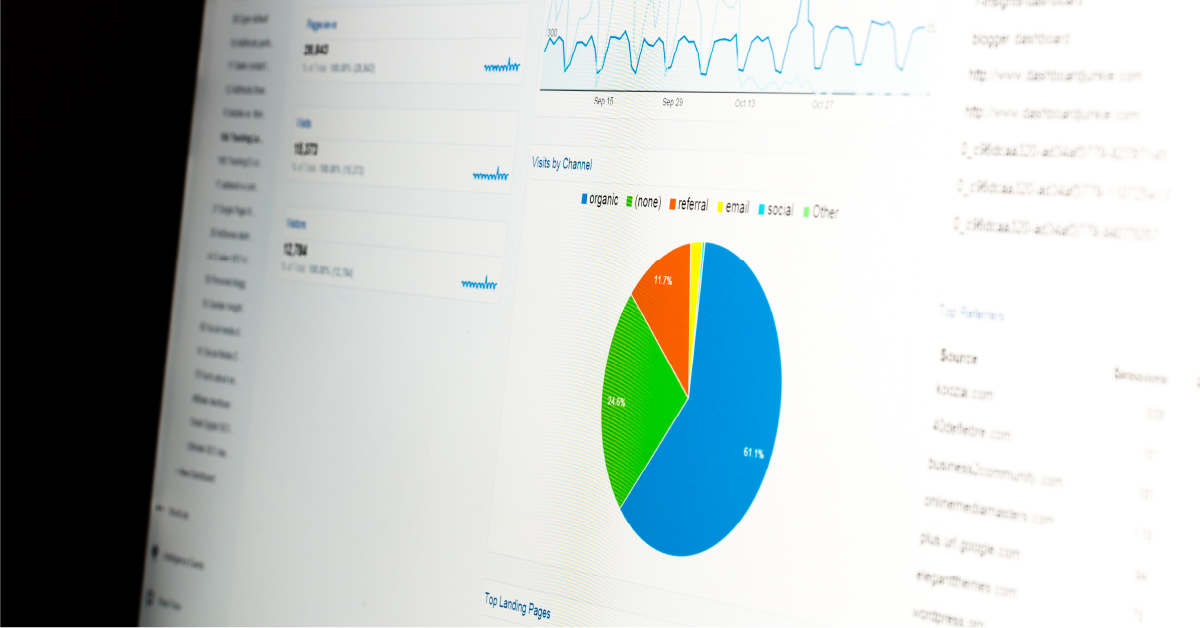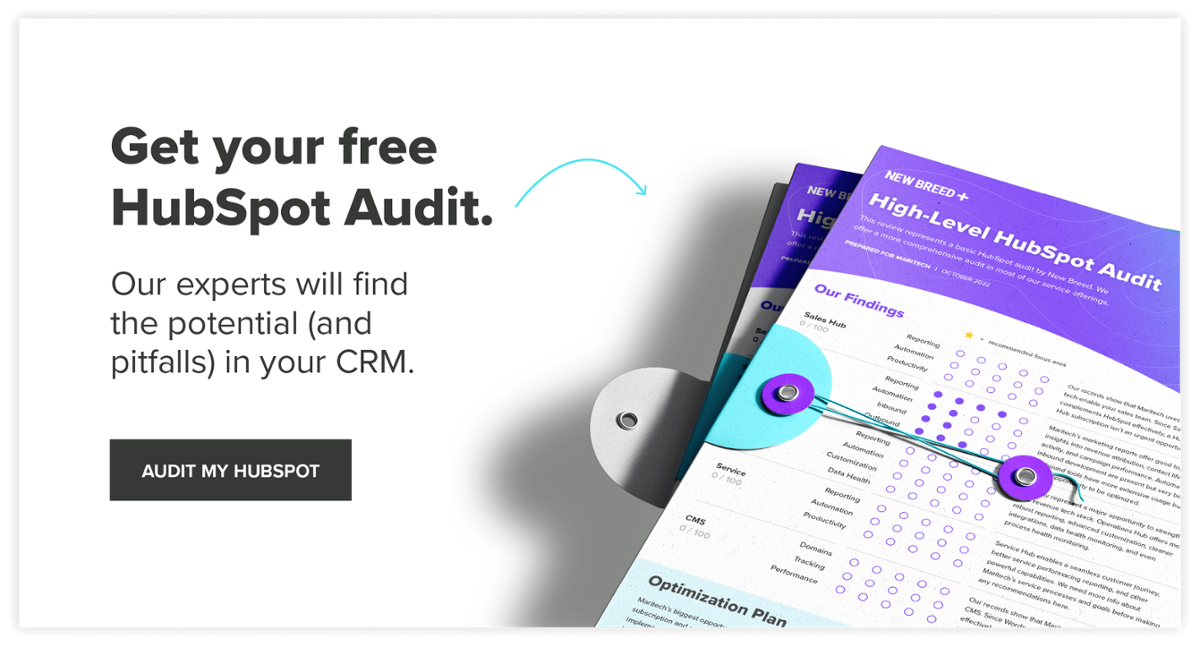What Marketing Analytics Tools Do You Need?

Your marketing efforts should serve a purpose and actively help grow your business. Ideally, you’ll be able to tie your marketing directly to revenue, but at the very least, your marketing should be producing qualified leads that your sales team can follow up with.
Without being able to analyze specific areas of your marketing and optimize them around achieving your goals, it’ll be hard to prove your value and understand what’s working well and what needs to be improved.
Marketing analytics can help you ensure you’re investing time and resources into the correct areas so you see results. Here are nine areas you should have marketing analytics tools to measure.
Website
Your website should be your company’s best salesperson. It provides prospects with the information they need to progress in their buyer’s journey and captures information about leads so you can send them contextually-relevant communications.
To inform your website strategy, you should be tracking the performance of your website traffic and user behavior across different types of pages.
Website analytics tools help you understand how many people are coming to your website, whether or not your traffic is growing and if visitors are finding the information on your site valuable. These insights are presented through metrics like time on page, bounce rate and conversion rate.
HubSpot Analytics and Google Analytics can help you track those metrics, and Hotjar can give you insight into user behavior.
SEO
Using SEO analytics tools will increase your overall visibility and make it more likely your website will show up in search results.
SEO tools help you understand how your organic traffic is performing, which keywords you’re ranking for, what your domain authority is like, how many backlinks you have, how to get more backlinks and what technical errors exist on your site.
HubSpot can help you with SEO on the individual page-level. Otherwise, Google Search Console, SEMRush and Moz are the most popular tools for SEO analytics.
Email marketing helps you keep people coming back to your site, and email analytics helps you optimize your email campaigns and ensure recipients are actually engaging with them.
Email analytics tools help you track metrics like click-through rate, open rate, engagement by time of day, best send time, delivery rate, spam rate, bounce rate and total email sends.
Most marketing automation platforms that do email marketing have their own email analytics. HubSpot, Marketo, Pardot and MailChimp can all effectively run email marketing campaigns and measure their performance. HubSpot and Litmus also allow you to test out how emails will display in different browsers and platforms so you can ensure contacts are receiving emails without broken formatting.
Webinars
Webinars help you directly engage with your audience. They let you dive deeper into specific topics and connect higher-level concepts with your solutions.
Most webinar analytics are done in your webinar hosting platform. You’ll want to track the number of registrants, number of attendees and how attendees engage during the webinar.
Zoom, GoToWebinar and Webex allow you to host webinars and capture these insights.
Conversational Marketing
Conversational marketing enables you to engage with website visitors in real-time. That real-time engagement can accelerate your sales cycle and improve your website’s ease of use.
In order to understand how your conversational marketing efforts are performing, you’ll want to track what percentage of viewers engage with your chatbot, how many conversations were started, which conversation paths users engage with, what the common drop-off points are, what the completion rate is at the path and playbook level, how many emails were captured, how many meetings were booked and how long conversations lasted.
Drift, HubSpot and Intercom can all be used to run and analyze conversational marketing strategies.
Paid Ads
Paid search, display and social advertising help you get content in front of a targeted group of people for a cost. Paid analytics occurs in whatever platform you use to run your ad campaigns.
In order to optimize your spend and maximize your results, you should measure cost per click, click-through rate, amount spent, cost per contact, conversion rate, total clicks, total impressions and total conversions.
You can manage your search and display campaigns directly through GoogleAds and Bing Ads or use another platform like HubSpot, Wordstream or SEMRush. Your paid social campaigns can be managed directly through the platforms themselves: LinkedIn, Twitter and Facebook.
Social Media
Social media helps you engage with your audience on the platforms they’re already active on.
Metrics like engagement rates, engagement types, impressions, reach, followers and tags can help you understand how you’re doing.
However, with the goal of leveraging social media being to connect with audiences, it’s important to not just look at quantitative metrics but also do some qualitative analysis of the sentiment of your audience when they engage with you.
LinkedIn, Facebook, Twitter and Instagram all have their own in-platform analytics features, though their ways of measuring those metrics can vary platform to platform. You can also use tools like HootSuite or Sprout Social to see that data compiled into a single place.
Video
Video provides an alternate way for you to present content to your audience, and it can be used to enhance your website, email and social media strategies.
Views, time watched, viewer retention, conversion rate and play rate are all metrics that can help you understand how viewers engage with your videos.
Vidyard, Wistia, HubSpot Video, are effective tools for hosting and analyzing your videos. Youtube can also provide some high-level analytics if it’s your platform of choice. If you share natively on social media, each social platform will provide its own performance insights.
Podcasts
Podcasts provide an opportunity for you to increase your brand awareness and reach prospects outside of the office. Because of the relative newness of podcasts, analytics for podcasting isn’t super robust.
You should track metrics like total monthly downloads, downloads by time, downloads by location, downloads by episode, follower count, platform listened through and retention rate.
This information will be available for whatever platform you use to host your podcast. Anchor and PodBean are both effective tools you can use.
Tying Everything Back to Your Funnel
While it’s important to have a tool to measure every aspect of your marketing strategy, at the end of the day you shouldn’t analyze each area in a vacuum.
It’s important to take a step back and look at the business outcomes and results that you are ultimately responsible for, and by that I mean the marketing funnel — visits, leads, MQLs, SQLs, opportunities, closed-won deals and revenue.
This higher-level view can help you isolate which area needs the most attention and where you should be spending your precious time and resources. Then, marketing analytics can be used to identify how a particular aspect of your strategy can be refined.
Guido Bartolacci
Guido is Head of Product and Growth Strategy for New Breed. He specializes in running in-depth demand generation programs internally while assisting account managers in running them for our clients.





